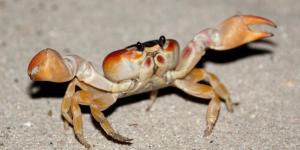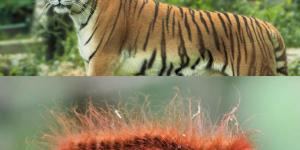Are Worms Insects or Amphibians? - Worm Classification


Worms are neither insects nor amphibians, but it is easy to understand why many confuse them as such. Worms have a slimy body and can often be seen in wet soils, just like amphibians. They can also be described as ‘creepy crawlies’, a term used to describe all kinds of insects. Since they have similar habitats and behaviors, many people wonder are worms insects or amphibians?
AnimalWised explains more about worm classification in biology. We explain what type of animals are worms by looking at their various characteristics which have resulted in their taxonomic classification, as well as informal terms applied to worms.
Are worms vertebrates or invertebrates?
If someone were to ask you what is a worm, it is likely you will have a clear picture in your mind. However, the term ‘worm’ does not actually have a specific or even a formal use. It is not applied in any concrete taxonomic way since there are many species in the animal kingdom which are referred to as worms. The morphological and behavioral variety between these worm species are great, but they do share certain characteristics.
For this reason, there are many animals that can be referred to as worms. We include all the animals which have ‘worm’ in their species name or which have an informal association with worms.
- Annelids: within this group of invertebrates, we find animals such as earthworms, bristle worms (polychaetes) and leeches. Depending on the species, annelids can live on land, in the sea or in fresh water. These types of worms have apportioned bodies, giving rise to their common name of segmented worms. Learn more with our guide to different types of annelids.
- Ribbon worms: some may wonder if tapeworms are annelids, but they are part of a different phylum. Tapeworms include species such as the bootlace worm (Lineus longissimus) from the phylum Nemertea, one of the longest animals in the world.
- Tapeworms: as with ribbon worms, they are flattened worms, some of which are parasites of vertebrate animals. These types of worms are part of the class Cestoda.
- Arrow worms: invertebrates from the phylum Chaetognatha, they are predatory species of exclusively marine life.
- Helminths: another reason why our understanding of why there is such as loose definition of worms is that parasitic worms are referred to as helminths. This is not a taxonomic definition, since animals of many phyla fall under this banner. They are endoparasites which include tapeworms (cestodes), blood flukes (trematodes) and roundworms (nematodes). Learn more with our article on heartworms in dogs.
- Insect larvae: the majority of insect species undergo a process known as metamorphosis. During this process, they go through various stages until they become their final adult stage. During the larval stage, they take the form of a worm-like creatures of which caterpillars are a common example.
- Slow worms: despite their name, these animals are a reptile species which are very similar to snakes. They are actually a type of legless lizard.
- Caecilian: despite their wormlike body, animals in the order Gymnophiona are actually amphibians with an elongated and legless body. Some are small in size and look very similar to earthworms. Although neither are not worms, discover what makes the difference between reptiles and amphibians.
With the exception of the last two animals on the above list, all are vertebrates. However, the latter species are not actually types of worm. They are a reptile and an amphibian which have common names due to their wormlike characteristics. Generally speaking the animals we call worms are all invertebrates.
Are worms insects or amphibians?
Despite there being similarities in morphology, habitat, behavior and other characteristics, worms are not insects, nor amphibians. One of the reasons why worms are sometimes confused with insects is due to insect larvae. This stage of the insect life cycle bears resemblance to worms, but they are not worms. Worms do not have legs, but many insect larvae such as caterpillars have legs.
Insect larvae are usually referred to according to their corresponding adult stage. For example, butterfly and moth larvae are known as caterpillars and the larvae of flies are known as maggots. Learn more with our related article on the difference between butterflies and moths.
The reason why many people confuse worms as amphibians is due to species such as caecilians. These limbless amphibians are not worms, despite their elongated body shape and slimy bodies. There are also types of mollusks which have similar elongated bodies, such as those found in the class Caudofoveata. These mollusks are not worms either.

What are worms?
Up to this point, we have focused on what worms are not. We know they are not insects, amphibians or mollusks, despite there being species of these animals with similarities. We have confirmed that worms are invertebrates, but there are other characteristics with which we should be able to define worms. Some of the defining characteristics that all worms are that they have a tubular, elongated body which does not have any limbs.
However, there are other characteristics common to worms which we can help to describe them. Since worms incorporate such diverse types of animals, not all of these traits will apply to all kinds of worms:
- They can measure from a few millimeters to several meters in length, meaning they are not of uniform size.
- They have bilateral symmetry.
- They do not belong to a single taxonomic group.
- Their body is generally soft, but some become covered by a cuticle as they mature and develop.
- They may or may not have eyes.
- Some species have body segmentation, others do not. Annelids are commonly known as segmented worms with the earthworm being one of the most well known.
- Some are free-living in soil or water, while others live inside other animals as parasites.
- Since they do not have legs or locomotor limbs of any type, they can move by undulations of the body or by using cilia (hairlike organelle).
- Depending on the group, they reproduce either sexually or asexually.
- Their diet varies as some are predators, some feed on nutrients of their host, others on water or soil particles.
- There are parasitic species of worms that cause a variety of diseases such as ascariasis, elephantiasis, enterobiasis, hookworm, onchocerciasis, trichinosis, trichuriasis and many others.
Although we know worms are not insects, many of both species live in both marine and freshwater environments. We provide a guide to types of aquatic insects to learn more.
If you want to read similar articles to Are Worms Insects or Amphibians? - Worm Classification, we recommend you visit our Facts about the animal kingdom category.
- Animal Diversity Web. (2020). Retrieved from: https://animaldiversity.org/
- Hickman, C., Roberts, L., & Parson A. (2000). Comprehensive principles of zoology. McGraw Hill Inter-American: Spain.
- Natural Museum of Natural History Chile. (2019). Molluscs that look like worms. Retrieved from: https://www.mnhn.gob.cl/noticias/moluscos-que-parecen-gusanos






